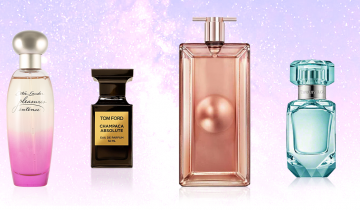written by Queena Lin
edited by CHIQIO
key words: perfume, scent, fragrance, inspiration
Perfume creation is an art that requires a blend of science, creativity, and inspiration. For centuries, master perfumers have drawn from various sources to craft fragrances that evoke emotions, memories, and sensory experiences. Understanding the origins of these inspirations can deepen our appreciation for the fragrances we wear and the stories they tell. Here, we explore some of the most influential sources of inspiration for perfume.
Nature Influences
Nature has been a timeless source of inspiration for perfumers. From the delicate blossoms of a garden to the rugged aroma of a forest, the natural world offers an endless palette of scents.
Floral Notes: Flowers are perhaps the most common inspiration in perfumery. Roses, jasmine, and lavender are classic examples, each bringing its unique character to a fragrance. Floral scents are often associated with romance, elegance, and femininity.
Citrus Fruits: Bright and invigorating, citrus fruits like lemons, oranges, and bergamot provide a fresh and uplifting aroma. These notes are often used in colognes and summer fragrances to evoke a sense of vitality and energy.
Herbs and Spices: Herbs such as rosemary, thyme, and mint add an aromatic and sometimes medicinal quality to perfumes. Spices like cinnamon, clove, and cardamom bring warmth and exoticism, often found in oriental and gourmand fragrances.
Personal Memories and Emotions
Perfume is deeply personal and can evoke powerful memories and emotions. Perfumers often draw from their own experiences to create fragrances that resonate on a personal level.
Childhood Memories: The smell of a grandmother’s garden, the scent of a favorite dessert, or the aroma of a seaside vacation can all serve as potent sources of inspiration. These nostalgic elements often result in comforting and familiar fragrances.
Emotional States: Happiness, sadness, love, and longing can all be captured through scent. Perfumers use a blend of notes to evoke specific emotions, creating fragrances that can uplift, soothe, or seduce.
Cultural Influences
Cultural heritage and historical events have also significantly influenced perfume creation. Perfumers often draw from traditions, folklore, and significant periods to craft scents that tell a story.
Ancient Civilizations: The use of perfumes dates to ancient Egypt, Greece, and Rome, where fragrant oils and balms were used in religious rituals and daily life. Modern perfumers sometimes recreate these ancient scents to bring a touch of history and mystique to their creations.
Oriental Influences: The rich and complex fragrances of the Middle East, with their use of oud, amber, and spices, have inspired countless perfumes. These notes are synonymous with luxury, opulence, and sensuality.
Cultural Celebrations: Festivals and traditions from around the world, such as the Indian Holi festival or Japanese Hanami (cherry blossom viewing), can inspire perfumers to create scents that capture the essence of these vibrant celebrations.
Modern Influences
In today’s fast-paced world, contemporary elements also play a role in inspiring perfumes. Fashion trends, technological advancements, and urban environments can all provide fresh ideas.
Fashion and Design: The latest trends in fashion and design often find their way into the world of perfume. A sleek, minimalist design might inspire a clean, crisp scent, while a bold, avant-garde fashion statement could lead to an unconventional and daring fragrance.
Urban Landscapes: The hustle and bustle of city life, with its mix of concrete, greenery, and diverse cultures, can inspire complex and multifaceted fragrances. These scents often capture the essence of modern living, balancing fresh and vibrant notes with deeper, more grounded elements.
Conclusion
The sources of inspiration for perfumes are as diverse and dynamic as the fragrances themselves. From the timeless beauty of nature to the rich tapestry of cultural heritage, personal memories, artistic expressions, and modern influences, each scent tells a unique story. Next time you spritz on your favorite perfume, take a moment to appreciate the myriad inspirations that have gone into its creation, and let it transport you to a world of sensory delight.


 No products in the cart.
No products in the cart.